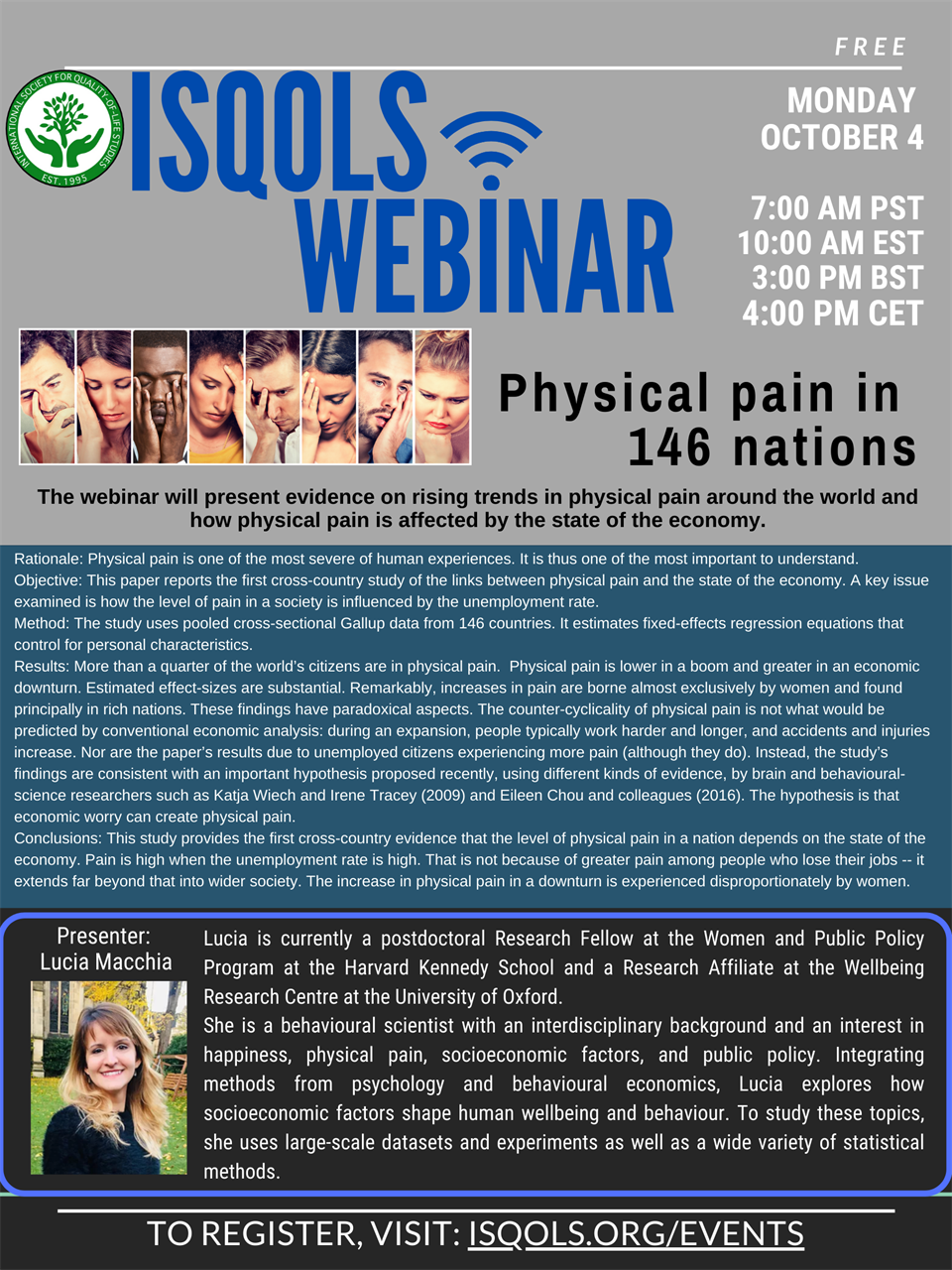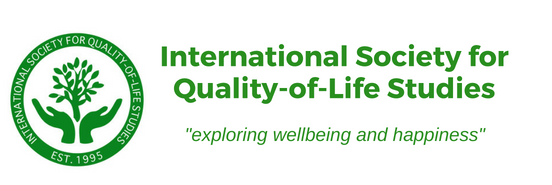ISQOLS WEBINAR:
Physical pain in 146 nations
MONDAY OCTOBER 4
7:00 AM PST/10:00 AM EST/3:00 PM BST/4:00 PM CET
FREE
The webinar will present evidence on rising trends in physical pain around the world and how physical pain is affected by the state of the economy.
Rationale: Physical pain is one of the most severe of human experiences. It is thus one of the most important to understand.
Objective: This paper reports the first cross-country study of the links between physical pain and the state of the economy. A key issue examined is how the level of pain in a society is influenced by the unemployment rate.
Method: The study uses pooled cross-sectional Gallup data from 146 countries. It estimates fixed-effects regression equations that control for personal characteristics.
Results: More than a quarter of the world’s citizens are in physical pain. Physical pain is lower in a boom and greater in an economic downturn. Estimated effect-sizes are substantial. Remarkably, increases in pain are borne almost exclusively by women and found principally in rich nations. These findings have paradoxical aspects. The counter-cyclicality of physical pain is not what would be predicted by conventional economic analysis: during an expansion, people typically work harder and longer, and accidents and injuries increase. Nor are the paper’s results due to unemployed citizens experiencing more pain (although they do). Instead, the study’s findings are consistent with an important hypothesis proposed recently, using different kinds of evidence, by brain and behavioural-science researchers such as Katja Wiech and Irene Tracey (2009) and Eileen Chou and colleagues (2016). The hypothesis is that economic worry can create physical pain.
Conclusions: This study provides the first cross-country evidence that the level of physical pain in a nation depends on the state of the economy. Pain is high when the unemployment rate is high. That is not because of greater pain among people who lose their jobs -- it extends far beyond that into wider society. The increase in physical pain in a downturn is experienced disproportionately by women.
Presenter:
Lucia Macchia
Lucia is currently a postdoctoral Research Fellow at the Women and Public Policy Program at the Harvard Kennedy School and a Research Affiliate at the Wellbeing Research Centre at the University of Oxford.
She is a behavioural scientist with an interdisciplinary background and an interest in happiness, physical pain, socioeconomic factors, and public policy. Integrating methods from psychology and behavioural economics, Lucia explores how socioeconomic factors shape human wellbeing and behaviour. To study these topics, she uses large-scale datasets and experiments as well as a wide variety of statistical methods.


